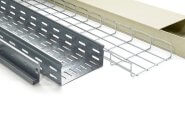Despite the decline in demand in the domestic market, we are witnessing the growth of steel prices in the domestic market. For the first time in July, the Iranian market witnessed days with zero demand in some areas. But these events were not a reason for lower steel prices in Iran. It seems that the Restrictions on steel production in the current situation has made some producers’ palate sweet and the consumer’s palate bitter. In the following, we will evaluate the conditions of the domestic steel market. Please be with Artan Press.
*** Restrictions on steel production and significant price growth
We start the market assessment from the price situation in the rebar sector, which is the most popular area in length sections. The July activity file of ribbed rebar market was closed with about 11% average price increase (from 15,205 Tomans to 16,885 Tomans including VAT). This situation has occurred in a situation where the restriction of steel production is the biggest factor for the growth of prices and reaching these historic ceilings. Despite the severe recession in the construction of the country, but there is no reason for the price of ribbed rebar to grow up to these rates. This is while we have not yet reached the middle of summer.
It seems that the conditions for reducing prices are not favorable. Many construction projects have been shut down in the hope of better days in the steel market or are operating with minimal Mongol capacity. It remains to be seen what changes will eventually take place in the governing structure of the market.
*** ۳۲% growth due to limited steel production
The situation of staggering prices in all steel bases is as we explained about ribbed rebar. Due to the limitation of steel production due to power outages, warehousemen and steel producers sell goods to the market at any price they want. Prices are not monitored. The situation has developed in such a way that a 32% increase in steel prices in the first 4 months of 1400 and the inequality of this price increase compared to a 13% increase in the basic statements of dollar remittances and steel export rates are part of the domestic steel pricing catastrophe. In general, in the first 4 months of 1400; The domestic market of induction ingots and ribbed rebar in the country, on average and approximately about 32% price increase has passed.
This price growth that we are witnessing in the steel market has not been achieved in any financial market. That is, if an investor had entered the market of rebar and induction ingots from the beginning of the year, he would have made a third of his capital by today. The evaluation of prices in this period shows that the rebar has increased from 12,805 Tomans to 16,885 Tomans including VAT and induction ingots from 11,405 Tomans to 15,120 Tomans including VAT.
*** Currency indicators affecting the inflation rate of steel market
The Iranian steel market these days is more or less stronger than the dollar and foreign exchange markets. In July, we saw the exchange rate rise by 1000 Tomans just a few days after the presidential election. If in the same time period; Let’s have a look at the average buying and selling rate of half a dollar remittance and the rate of Iran’s export ingots; The available variables will be as follows: the latest rates in 1399 based on the average rate of Iran’s export ingots will be equal to 551 dollars / ton FOB. Also, the average weekly remittance rate of the half dollar was about 23,050 Tomans. Meanwhile, the average rate of Iran’s export ingots until the last day of July is $ 641.5 / ton FOB and the average weekly dollar rate is estimated at 22,280 Tomans.
این مطلب بدون برچسب می باشد.












ثبت دیدگاه